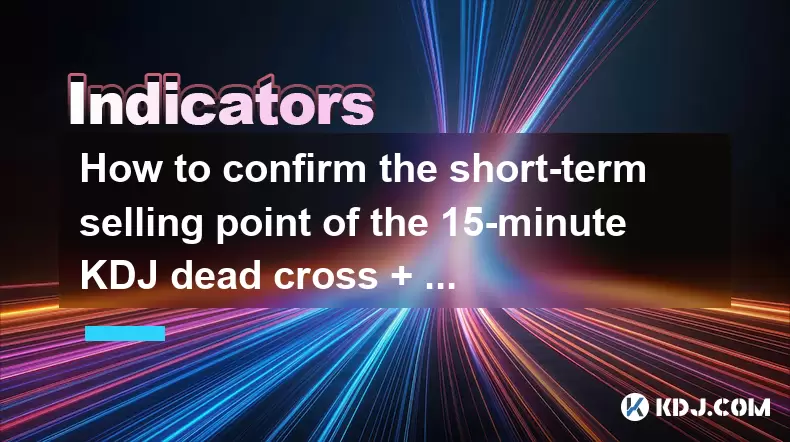-
 Bitcoin
Bitcoin $118600
0.36% -
 Ethereum
Ethereum $3855
1.06% -
 XRP
XRP $3.195
-0.09% -
 Tether USDt
Tether USDt $1.000
-0.04% -
 BNB
BNB $844.5
6.23% -
 Solana
Solana $191.3
2.83% -
 USDC
USDC $0.9997
-0.01% -
 Dogecoin
Dogecoin $0.2376
0.10% -
 TRON
TRON $0.3242
0.83% -
 Cardano
Cardano $0.8222
0.13% -
 Hyperliquid
Hyperliquid $45.26
6.53% -
 Sui
Sui $4.200
-2.56% -
 Stellar
Stellar $0.4336
-1.24% -
 Chainlink
Chainlink $18.86
0.28% -
 Hedera
Hedera $0.2796
-1.75% -
 Bitcoin Cash
Bitcoin Cash $583.3
-1.84% -
 Avalanche
Avalanche $27.06
8.09% -
 Litecoin
Litecoin $112.3
-1.16% -
 Toncoin
Toncoin $3.353
0.58% -
 UNUS SED LEO
UNUS SED LEO $8.968
-0.11% -
 Shiba Inu
Shiba Inu $0.00001395
-0.54% -
 Ethena USDe
Ethena USDe $1.001
-0.03% -
 Uniswap
Uniswap $10.76
0.69% -
 Polkadot
Polkadot $4.175
0.26% -
 Monero
Monero $326.7
1.07% -
 Bitget Token
Bitget Token $4.665
1.61% -
 Dai
Dai $0.9998
-0.02% -
 Pepe
Pepe $0.00001271
0.32% -
 Cronos
Cronos $0.1416
2.01% -
 Aave
Aave $299.3
1.15%
How to confirm the short-term selling point of the 15-minute KDJ dead cross + 5-minute breaking through the previous low?
The 15-minute KDJ dead cross combined with a 5-minute break below the prior swing low offers a high-probability short entry when confirmed by volume and higher timeframe trends.
Jul 28, 2025 at 05:00 am

Understanding the KDJ Indicator in Short-Term Trading
The KDJ indicator is a momentum oscillator widely used in cryptocurrency technical analysis to identify overbought and oversold conditions. It consists of three lines: the %K line, the %D line, and the %J line. The %K line reflects the current price relative to the price range over a specified period, typically 9 periods. The %D line is a moving average of %K, and the %J line represents a triple-weighted difference between %K and %D. In short-term trading, especially on 15-minute charts, the KDJ helps traders spot potential reversals. A dead cross occurs when the %K line crosses below the %D line, particularly when both are above 80, indicating an overbought state and potential downward momentum. This signal becomes more reliable when combined with other timeframes and price action confirmations.
Identifying the 15-Minute KDJ Dead Cross
To use the 15-minute KDJ dead cross as a short-term selling signal, traders must first ensure the indicator settings are properly configured. The standard setting is 9,3,3 for %K, %D, and %J respectively. When analyzing the 15-minute chart:
- Open your trading platform and load the 15-minute candlestick chart of the cryptocurrency pair you're monitoring.
- Apply the KDJ indicator with default or adjusted parameters.
- Wait for both the %K and %D lines to rise above 80, indicating overbought conditions.
- Monitor for the moment when the %K line crosses downward through the %D line—this is the dead cross.
- Confirm that the crossover happens near or after a recent price peak to increase validity.
This setup suggests weakening bullish momentum and a potential reversal. However, the 15-minute dead cross alone is not sufficient for a high-confidence sell signal. It must be combined with additional confirmation from lower timeframes to avoid false entries.
Confirming with 5-Minute Price Breaking Previous Low
After detecting a KDJ dead cross on the 15-minute chart, the next step is to switch to the 5-minute timeframe for entry precision. The purpose is to catch the early stages of a downward move with minimal delay. The key confirmation is whether the price breaks below the previous swing low on the 5-minute chart.
- Navigate to the 5-minute chart of the same cryptocurrency pair.
- Identify the most recent swing low—this is the lowest point before the current upward movement.
- Observe price action closely after the 15-minute dead cross occurs.
- Wait for a candlestick to close below that identified swing low level.
- Ensure volume or candlestick strength supports the breakdown (e.g., long red candle, increased trading volume).
This breakdown confirms bearish momentum is accelerating. The combination of the 15-minute KDJ dead cross and the 5-minute break of the prior low creates a confluence of signals, increasing the probability of a successful short entry.
Executing the Short Sale with Precision
Once both conditions are met, executing the short trade requires careful planning to maximize risk-reward efficiency.
- Set your entry point at the close of the 5-minute candle that breaks the previous low.
- Place a stop-loss order slightly above the recent swing high on the 5-minute chart to limit downside risk if the reversal fails.
- Determine a take-profit level based on key support zones, Fibonacci retracement levels, or a fixed risk-reward ratio (e.g., 1:2).
- Use limit orders to enter the short position if the price shows signs of retracing slightly after the breakdown.
- Monitor the KDJ on the 5-minute chart to avoid entering during an oversold bounce.
It is crucial to avoid emotional trading and stick strictly to the predefined criteria. Automated alerts on KDJ crossovers and price breaks can assist in timely execution, especially in fast-moving crypto markets.
Managing Risk and Avoiding False Signals
Cryptocurrency markets are highly volatile, and false signals are common. The KDJ dead cross can occur during consolidation phases or minor pullbacks within an uptrend. To reduce risk:
- Only act on dead crosses that occur after a clear upward move, not during sideways price action.
- Verify that the RSI or MACD on the 15-minute chart also shows weakening momentum.
- Check higher timeframes (e.g., 1-hour) to ensure the overall trend isn't strongly bullish, which could invalidate the short signal.
- Avoid trading during major news events or low liquidity periods when KDJ signals may be distorted.
Additionally, multiple time frame alignment strengthens the signal. If the 1-hour KDJ is also rolling over or entering overbought territory, the short setup gains further credibility.
Practical Example Using Binance and TradingView
Suppose you're analyzing BTC/USDT on Binance using TradingView:
- On the 15-minute chart, you notice the KDJ lines (%K and %D) have risen above 80.
- The %K line crosses below %D—this is the dead cross.
- You immediately switch to the 5-minute chart.
- You identify the last swing low at $61,200.
- A 5-minute candle closes at $61,180, below that level.
- Volume increases on the down candle, confirming selling pressure.
- You enter a short position at $61,180.
- You set a stop-loss at $61,350 (above the recent swing high).
- Your take-profit is set at $60,800, a known support level.
This example demonstrates how the two conditions work in tandem to generate a timely and logical short entry.
Frequently Asked Questions
What if the 5-minute candle breaks the low but quickly rebounds?
This may indicate a false breakdown. Wait for two consecutive closing candles below the prior low to confirm sustained bearish control. Also, check for long lower wicks that suggest rejection.
Can this strategy be applied to altcoins?
Yes, but with caution. Altcoins often exhibit higher volatility and manipulation. Ensure sufficient trading volume and use tighter stop-losses. Test the strategy on stable large-cap altcoins like ETH or BNB before applying to smaller ones.
Should I adjust KDJ parameters for different cryptocurrencies?
The default 9,3,3 setting works well for most cases. However, for extremely volatile tokens, increasing the %K period to 13 may smooth the lines and reduce noise. Always backtest changes on historical data.
Is it necessary to use both 15-minute and 5-minute charts, or can I rely on one?
Using both timeframes increases accuracy. The 15-minute chart provides the strategic signal, while the 5-minute chart offers tactical entry. Relying on only one may lead to premature or late entries.
Disclaimer:info@kdj.com
The information provided is not trading advice. kdj.com does not assume any responsibility for any investments made based on the information provided in this article. Cryptocurrencies are highly volatile and it is highly recommended that you invest with caution after thorough research!
If you believe that the content used on this website infringes your copyright, please contact us immediately (info@kdj.com) and we will delete it promptly.
- Elon Musk, SpaceX, and Bitcoin: A $153 Million Mystery
- 2025-07-28 22:30:12
- Ozak AI: Is This Crypto Gem Primed for a 2025 Takeoff?
- 2025-07-28 22:30:12
- Anchorage Digital & Ethena Labs: Ushering in a New Era of Stablecoins with GENIUS Compliance
- 2025-07-28 20:50:13
- Altcoins Soar, Bitcoin Stumbles: Decoding the Crypto Inflows Shift
- 2025-07-28 20:50:13
- XRP, Pi Coin, Ethereum: Decoding the Latest Crypto Trends
- 2025-07-28 21:30:12
- Meme Coin Mania: SPX6900's Surge and TOKEN6900's Potential Explosion
- 2025-07-28 21:30:12
Related knowledge

What does it mean when the EMA combination crosses upward for the first time after sideways trading?
Jul 28,2025 at 03:43pm
Understanding the EMA and Its Role in Technical AnalysisThe Exponential Moving Average (EMA) is a widely used technical indicator in cryptocurrency tr...

What signal does the ROC send when it rises rapidly from a low level and breaks through the zero axis?
Jul 27,2025 at 10:15am
Understanding the Rate of Change (ROC) IndicatorThe Rate of Change (ROC) is a momentum-based oscillator used in technical analysis to measure the perc...

What does it mean when the price breaks through the double bottom neckline and the moving averages are arranged in a bullish pattern?
Jul 28,2025 at 10:57am
Understanding the Double Bottom PatternThe double bottom is a widely recognized reversal chart pattern in technical analysis, particularly within the ...

What signal does the DMA fast line cross the slow line above the zero axis?
Jul 28,2025 at 05:42am
Understanding the DMA Indicator and Its ComponentsThe DMA (Difference of Moving Averages) indicator is a technical analysis tool used in cryptocurrenc...

What does it mean that the rebound is blocked after the moving average is arranged in a short position for the first time?
Jul 26,2025 at 10:51am
Understanding the Short-Term Moving Average ConfigurationWhen traders refer to a 'short position arrangement' in moving averages, they are describing ...

What does it mean that the ZIGZAG low point is raised and the high point breaks through the previous peak?
Jul 28,2025 at 03:28am
Understanding the ZIGZAG Indicator in Cryptocurrency TradingThe ZIGZAG indicator is a technical analysis tool widely used in cryptocurrency trading to...

What does it mean when the EMA combination crosses upward for the first time after sideways trading?
Jul 28,2025 at 03:43pm
Understanding the EMA and Its Role in Technical AnalysisThe Exponential Moving Average (EMA) is a widely used technical indicator in cryptocurrency tr...

What signal does the ROC send when it rises rapidly from a low level and breaks through the zero axis?
Jul 27,2025 at 10:15am
Understanding the Rate of Change (ROC) IndicatorThe Rate of Change (ROC) is a momentum-based oscillator used in technical analysis to measure the perc...

What does it mean when the price breaks through the double bottom neckline and the moving averages are arranged in a bullish pattern?
Jul 28,2025 at 10:57am
Understanding the Double Bottom PatternThe double bottom is a widely recognized reversal chart pattern in technical analysis, particularly within the ...

What signal does the DMA fast line cross the slow line above the zero axis?
Jul 28,2025 at 05:42am
Understanding the DMA Indicator and Its ComponentsThe DMA (Difference of Moving Averages) indicator is a technical analysis tool used in cryptocurrenc...

What does it mean that the rebound is blocked after the moving average is arranged in a short position for the first time?
Jul 26,2025 at 10:51am
Understanding the Short-Term Moving Average ConfigurationWhen traders refer to a 'short position arrangement' in moving averages, they are describing ...

What does it mean that the ZIGZAG low point is raised and the high point breaks through the previous peak?
Jul 28,2025 at 03:28am
Understanding the ZIGZAG Indicator in Cryptocurrency TradingThe ZIGZAG indicator is a technical analysis tool widely used in cryptocurrency trading to...
See all articles

























































































